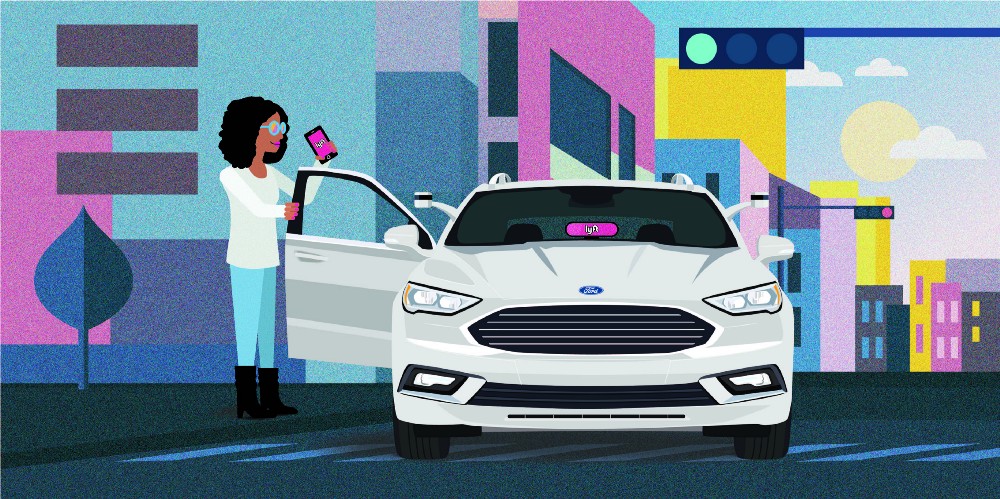Er is geen twijfel meer dat zelfrijdende auto's in de toekomst van grote invloed zijn op het vervoeren van mensen en goederen. Maar de omvang van die impact - en hoe snel zelfrijdende voertuigen de maatschappij ten goede komen - hangt grotendeels af van de samenwerking tussen bedrijven, overheid en de bevolking. Ford en Lyft maken een belangrijke stap in de toekomst van zelfrijdende auto's. Beide bedrijven wilen met de samenwerking een duurzame en betaalbare toekomst op het gebied van transport bewerkstelligen.
Downloads
Lees hieronder de complete Engelse blogpost:
Today, we’re announcing a significant step toward bringing self-driving vehicles to the masses thanks to a new partnership with Lyft that will help both companies progress toward a more affordable, dependable and accessible transportation future.
As we at Ford continue making progress on developing self-driving technology – through our self-driving vehicle and Argo AI’s virtual driver system – we are simultaneously building out the infrastructure and systems necessary to make it easy for people to use our service. Think of it this way: Someday, when you open the Lyft app during a period of high demand, Ford and Lyft software will need to be capable of quickly dispatching a self-driving vehicle so that you can get to your destination as quickly and as safely as possible.
And that’s where our work with Lyft begins.
Lyft has a network of customers, growing demand for rides and strong knowledge of transportation flow within cities. We have experience with autonomous vehicle technology development and large scale manufacturing. Both companies have fleet management and big data experience. With our combined capabilities, we believe we can effectively share information to help make the best decisions for the future. Among the questions we’ll be answering together:
- How do we create our technology platform so that it can easily connect with a partner’s platform (such as Lyft’s) to effectively dispatch a self-driving vehicle?
- Based on our shared data and information, which cities should we work with to deliver our self-driving vehicle service?
- What kind of infrastructure will be necessary to service and maintain a fleet of self-driving vehicles to ensure they are available whenever a consumer needs one?
Some view the opportunity with self-driving vehicles as a race to be first. But we are focusing our efforts on building a service based around actual people’s needs and wants. We are placing a high priority on safety and dependability so customers will trust the experience that our self-driving technology will one day enable.
As we build our technology platform, we will deploy human-driven vehicles on Lyft’s network. This will allow us to test our platform interface to ensure compatibility with Lyft’s customer-facing platform – the one you currently see whenever you open the Lyft app. Our developer teams already are working together, programming our systems so they can communicate with one another. The goal is that customers using Lyft won’t notice any difference in their experience.
We also will connect our self-driving test vehicles to Lyft’s network. We don’t, however, plan to put customers in them until we are certain our technology delivers a positive, reassuring experience where we can gain meaningful feedback. When ready, we’ll have self-driving cars operating alongside Lyft’s current community of drivers to help accommodate times of significant consumer demand to ensure that transportation remains timely and affordable.
We expect that our partnership with Lyft will accelerate our efforts to build a profitable and viable self-driving vehicle business. With Lyft’s network and respected brand experience, we expect our ability to scale self-driving vehicles will play a critical role in safely bringing this technology – and its many benefits – to mainstream consumers.


